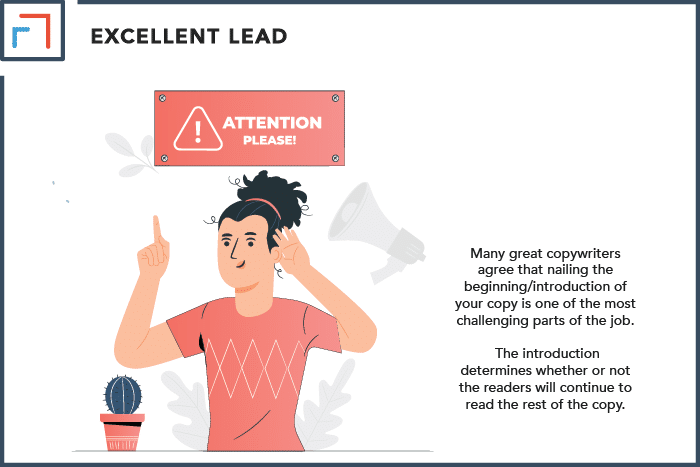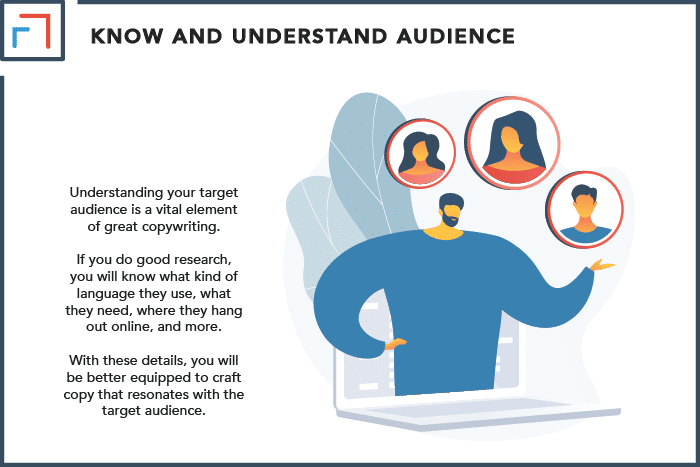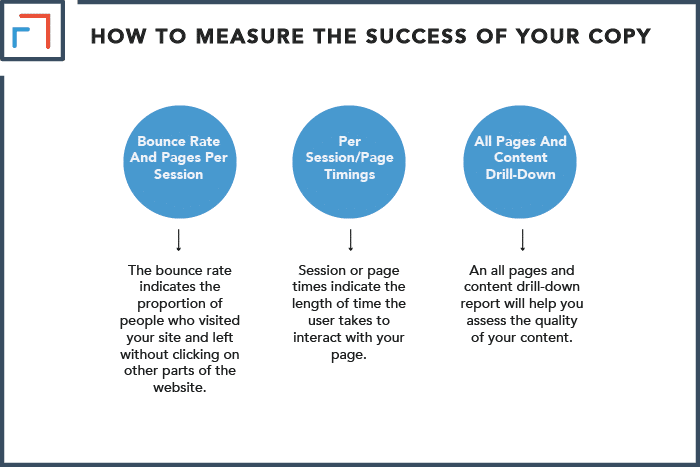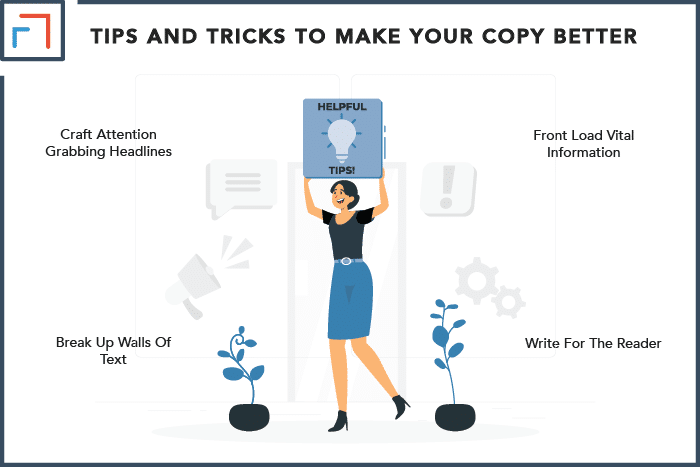Good copywriting can boost traffic and convert that traffic into hot leads. Unfortunately, it is sometimes difficult to tell whether your copy is bad, okay, or excellent. If you’re wondering if your copywriting is good, there are a few things you can check.
Good copywriting uses simple language, is free from excess, presents a fresh perspective, resonates with readers, and is created for a specific purpose. Ultimately, good copy will boost interactions and conversions. If you use tools like Google Analytics, you can also track the metrics of your copy.
In this post, we will discuss the attributes of good copywriting, how to measure the success of your copy, and tips to boost your copywriting skills. By following along, you can take your copy to the next level!
Attributes Of Good Copywriting
Knowing the attributes of good copywriting is the first step to gauging whether your own copywriting is good or not.
Below are some common traits of great copywriting to help you evaluate and improve your work.
1. It Has An Excellent Lead
Many great copywriters agree that nailing the beginning/introduction of your copy is one of the most challenging parts of the job. The saying goes, “There’s no second chance to make a first impression.”
The introduction determines whether or not the readers will continue to read the rest of the copy. The goal of the lead is to grab the reader’s attention and hold onto it.
Modern readers have short attention spans and cannot tolerate boring content. So, good copywriting should have a stunning lead that pulls the reader in and holds their attention.
For instance, Urban Daddy uses this lead sentence to capture attention: “Six days. That is how long you have until 65% of your body becomes turkey”.
Of course, the reader can’t help but wonder how the body will become turkey in the next six days. So they keep reading to find out more.
Ultimately, the lead sentence is designed to get the reader to keep reading. If it fails to do that, then crafting the copy was in vain.

2. It Has The Ability To Shift The Reader’s Perspective
From spammy messages to the use of hard-sell techniques, people have developed a distaste for marketing messages. As such, they have learned to ignore or skim promotional messages.
Good copywriting approaches promotions from a different angle. When done right, it gets readers to let down their guards because the message resonates with them.
Moreover, it carries a fantastic message that stands out from the rest of the competition in the market.
When you’re trying to write copy, it can be helpful to ask yourself why the topic/product matters before you start writing.
Keep answering this question until you can form an entirely different angle for your marketing message.
3. It Uses Simple Language And Avoids Hyperbole
While it is tempting to use flamboyant words to impress readers, it doesn’t always get the message home.
Readers may get lost trying to figure out the meaning of the words instead of the purpose of the message. In the end, they usually give up and stop reading.
Good copywriting speaks to the reader on clear terms without any unnecessary fluff. Unfortunately, in many cases, jargon and hyperbole clouds what is unique about the product or brand.
The use of jargon is prevalent when you’re dealing with a technical field, so it may be appropriate to use it at times. However, when it comes to addressing the general public, good copywriting cuts to the chase.
4. It Is Free From Excess
It is easier to write long text than it is to write short-form content.
In fact, Blaise Pascal, a renowned philosopher and mathematician, once said, “I would have written a shorter letter, but I did not have the time.”
Although it is agonizing to fit within a word/character limit, it prevents the reader from getting lost in thousands of adjectives and winding paragraphs.
Shortening your copy also rids it of excessive words, fluff, and passive voice. Plus, it keeps the message short and to the point.
Concise copy is good because it helps to capture and retain the audience’s attention. Since attention spans are shortening all the time, a brief message helps readers to know what you are talking about.
If your message is of interest to them, they will stay. You can keep your writing free from excess by reducing the word count and avoiding vague phrases.
Generally, if you can delete a word without losing the intended meaning, let it go. Make every word count, and don’t muddle the message.
5. It Knows And Understands Its Audience
Understanding your target audience is a vital element of great copywriting. If you do good research, you will know what kind of language they use, what they need, where they hang out online, and more.
With these details, you will be better equipped to craft copy that resonates with the target audience. One common mistake most brands make is filing their copy with superlatives and hoping it will work.
Unfortunately, it rarely does. People do not buy products because they are described with words like “industry leader,” “best,” “fastest,” etc. Instead, they buy because the product meets their needs.
In addition, the needs of your target audience go beyond material goods. They want to feel appreciated, uplifted, and included in a community.
Good copywriting takes such immaterial needs into account and capitalizes on these desires. Understanding your audience requires plenty of time and research.
Seek public opinion, conduct interviews, run surveys, and identify the problems people are facing and the kind of solutions they want. With these insights, it becomes easier to write copy that meets those needs.

How To Measure The Success Of Your Copy?
Sometimes, it can be tricky to tell if copy worked or not. One of the best ways to track the success of your writing is to follow the metrics of your copy.
Although the reactions may vary depending on the audience, it is still a course worth pursuing. Google Analytics is a free yet effective tool that can help you track your audience’s response.
By looking at the various metrics and categories, you can gain insights into what your audience liked and what they didn’t.
Below are some relevant Google Analytics metrics that will help you gauge the effectiveness of your copy.
1. Bounce Rate And Pages Per Session
The bounce rate indicates the proportion of people who visited your site and left without clicking on other parts of the website.
A higher bounce rate may indicate that your copy was unable to capture the reader’s attention.
If your bounce rate is high, it may mean the copy isn’t compelling or engaging enough to make the reader curious to find out more.
Many of us have probably clicked on a website, only to navigate away when it didn’t answer our question or provide entertainment.
Although a high bounce rate is disheartening, it means you did something that at least attracted some initial visitors. Now you just need to adjust your copy to make them stay.
If you don’t make appropriate changes, you risk throwing away opportunities for improvement.
You can lower copy-related bounce rates by using engaging intros and hooks to capture the audience’s attention. Next, you need to present copy that resonates with their needs.
You can also lower bounce rates by making your sites easy to navigate. Using anchor texts to link related pages can also increase the length of per-page sessions.
2. Per Session/Page Timings
Session or page times indicate the length of time the user takes to interact with your page.
Longer per session times are usually good because it suggests that visitors stuck around long enough to read and absorb some information.
However, if the sessions are suspiciously long, that could indicate that a reader just left the page open on their computer or walked away.
In the worst circumstances, readers may spend longer on your pages because they are confused and can’t tell what to do next. Look at the other metrics to determine whether long sessions are good or bad.
3. All Pages And Content Drill-Down
An all pages and content drill-down report will help you assess the quality of your content. It does this by comparing your work to various pieces of copy.
It also allows you to come up with averages that you can use for setting performance benchmarks. Start by comparing the average page timings of your blog pieces.
A few weeks’ worth of copy is an excellent place to begin. Also, look at how the audience reacted to each piece of copy based on their session lengths.
This will help you determine the piece of content that best succeeded in retaining visitors.
For instance, a piece of 500-word copy that retained a reader for two minutes would be said to perform better compared to a 1000-word piece that engaged the reader for three minutes.
With these insights, you will ascertain which copy length works better for your business. When you work on social media copy, look for the number of likes, comments, shares, and retweets.
If a piece of copy gets more shares and retweets than other pieces, try to identify what made it perform better. Once you find out what makes it stand out, use similar tactics in your future copy.

Tips And Tricks To Make Your Copywriting Better
Writing great copy will help you build a relationship with your audience and, in turn, move your leads successfully down the sales funnel. Below are some tips to help you write better copy.
1. Craft Attention Grabbing Headlines
Powerful headlines draw the reader in and convince them to read your copy. This makes headlines one of the most important parts of your copy.
The father of advertising, Ogilvy, once said, “Five times as many people read the headlines as read the body copy. When you have written your headline, you have spent 80 cents of your dollar.”
Creating great headlines takes time. As a result, some people take shortcuts, such as clickbait headlines.
Although these headlines may get your audience to click on the content, they underperform in the long run. This is because the headline rarely matches up with the body copy.
Clickbait usually leads to disappointed customers who have lost faith in your ability to communicate.
A better way to write great headlines is by writing the copy first and then going back to write the headline at the end. That way, it will accurately reflect the primary purpose of the copy.
2. Front Load Vital Information
The modern reader has zero tolerance for writers who beat around the bush. They want quick answers. They scan content looking for answers, and if they don’t get them, they move on to the next brand.
Provide answers within the first few paragraphs of your copy. Let the readers know about your value proposition right from the outset.
People are bombarded with information all day long; hence they must judge whether a page is worth reading.
Presenting your value proposition early will help your readers decide if your offer meets their needs. If it does, they will stay and read to the end.
3. Break Up Walls Of Text
Formatting plays a vital role in the quality of your copy. Even if your copy is compelling and persuasive, no one will read it if it is poorly formatted.
In addition, few readers take time to read text word by word; many simply skim through it. Large chunks of text are not only a grotesque sight, but they are also difficult to scan.
Below are some ways to make your copy easier on the eyes.
- Utilize numbered lists or use bullets.
- Introduce headings and subheadings.
- Use styling variations such as bold and italics where necessary.
- Use brief sentences and a maximum of 3 sentences per paragraph.
- Break up text monotony through visuals such as images and infographics.
4. Write For The Reader
Understanding your audience and involving them in your copy is a surefire way to write outstanding copy.
Before you embark on a project, identify who interacts with the brand, their habits, language, problems, fears, and challenges.
Knowing your audience helps you write copy that meets their expectations. As a result, you will have a satisfied audience that stays glued to your copy.
This level of connection also helps you build rapport with your readers. When readers feel they can trust you, it becomes easier for them to convert.
For further insights, create a section on your website where your readers can voice their opinions. This will help you craft copy that meets the expectations of each audience segment.
Another way to write for the reader is by using the word “you.” This helps you personalize the message, so the reader feels like you are addressing them.
This way, they are more likely to take action because the message is about them.

Wrapping Up
It can be hard to judge whether your copy is good or not, but there are several elements you can examine. For instance, good copy should focus on meeting the target audience’s needs.
You should also personalize your message so it will reach your audience on a personal level. In your copy, offer relevant solutions and advice.
After ensuring your copy is audience-based, it is time to track its performance. Utilize free tools such as Google Analytics to track how your audience interacts with your copy.
Then, use the insights to tweak your copy to perform better. Finally, use copywriting best practices such as proper formatting and writing catchy headlines.
If you follow these tips and improve your writing, you will be able to determine whether or not your copy is effective.
